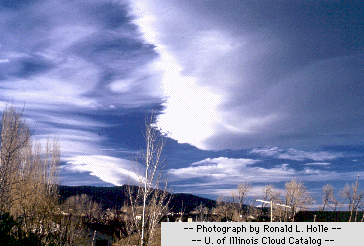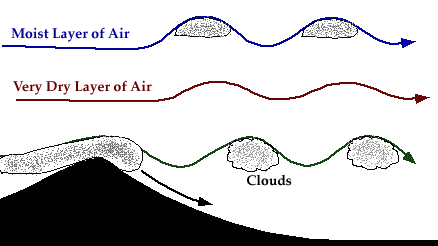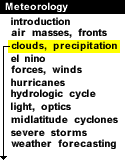
|
Orographic clouds are clouds that develop in response to the forced lifting of air by the earth's topography (mountains for example).

Photograph by: Holle
Air passing over a mountain oscillates up and down as it moves downstream (as shown in the diagram below). Initially, stable air encounters a mountain, is lifted upward and cools through expansion as it rises. If the air cools to its saturation temperature during this process, the water vapor within condenses and becomes visible as a cloud.

Upon reaching the mountain top, the air is heavier than the environment and will sink down the other side, warming as it descends. Once the air returns to its original height, it has the same buoyancy as the surrounding air. However, the air does not stop immediately because it still has momentum carrying it downward. With continued descent, the air becomes warmer than the surroundings and begins to accelerate back upward towards its original height (beginning the cycle again). It is during the upper-most ascent phase of this cycle that clouds develop. In regions where air is descending, skies are clear.

Photograph by: Holle
The lifting of moist air can result in the generation of clouds, while lifting drier air may not produce any clouds at all. The oscillations continue as the air moves further downstream from the mountains but are eventually dampened out by mixing and friction.

mammatus |
|

pileus |





